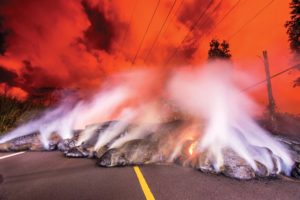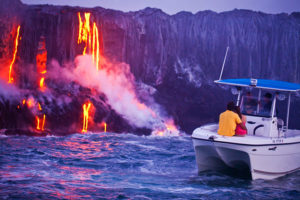By Karyl Garland
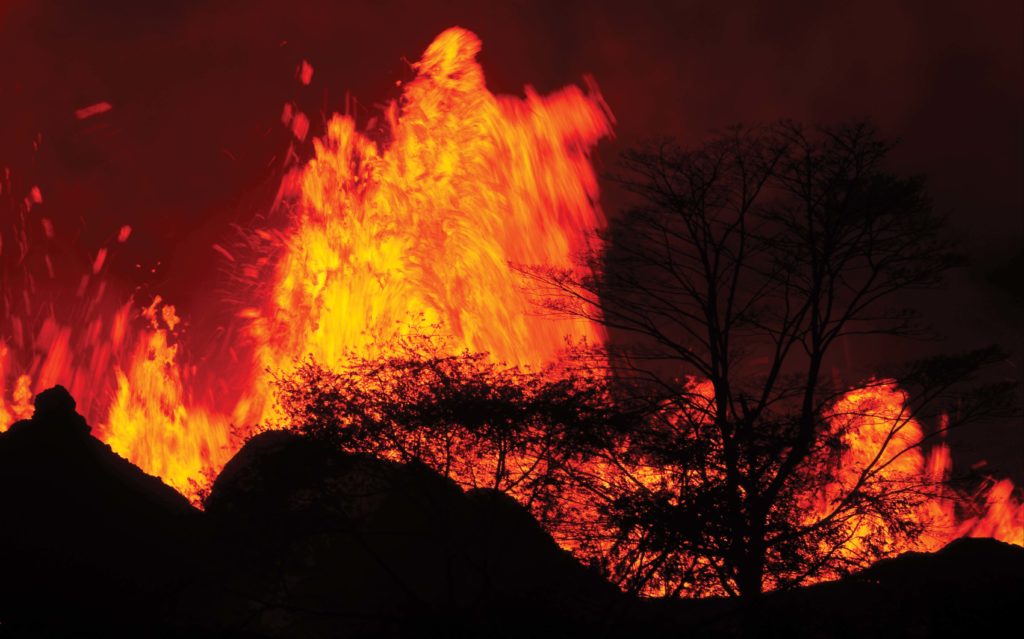
Myths surrounding the goddess Pele are intricate and intriguing. Tales tell of her birthplace and lineage, her migration from Tahiti to Hawaiʻi, her quest for a suitable home, her altercations and love affairs, and her hand in shaping the Hawaiian Islands.
The word pele also means volcano, lava flow, and eruption; through volcanic activity, she destroys everything in her path. As such, Pele is known as Ka wahine ʻai honua (the earth-eating woman), Ka wahine ʻai la‘au o Puna (the tree-eating woman), and Ka wahine ʻai pohaku (the stone-eating woman). However, through the same volcanic activity, Pele expands this island chain. She destroys, but she creates.
Some say Pele was born as a flame from the mouth of Haumea, the earth mother and goddess of fertility. She had many brothers and sisters, each of whom was a guardian of some element of nature. All of her siblings were devoted to her except for her elder sister Namakaokahaʻi. One story follows that it was Namaka who propelled Pele toward her destiny.
Exasperated because Pele had been a precocious, fire-making younger sister and later outraged because Pele had seduced her husband, Namaka drove her from the ancient Polynesian homeland Tahiti.
As Pele set forth, she was accompanied by her most respected brother Kamohoaliʻi—custodian of the waters (possibly in his shark form)—as guide. Her favorite younger sister Hiʻiaka also joined Pele, perhaps inside an egg under Pele’s arm to stay warm.
The islands and atolls of the South Pacific had become tranquil over the centuries. But the new islands Pele came upon were dynamic with rivers of molten lava and the potential to provide her with an ideal fiery home.
First landfall happened in the northern islands of the Hawaiian archipelago. Starting on Niʻihau and moving to Kauaʻi, Pele used her digging stick to strike the land looking for a molten pit to create residence. However, a relentless Namaka had pursued Pele. So, every time she excavated a crater, Namaka flooded it—an eternal opposition between the elements of fire and water.
So Pele traveled down the island chain followed by her enraged sister extinguished every pit Pele dug. It is said that the pursuit ended in a battle near Hana on the island of Maui where Pele was torn apart. A hill named Ka Iwi o Pele (the bones of Pele) stands where the battle was held and where Pele’s bones are said to remain.
With the death of her human self, Pele’s spirit was free, and she became elevated to godly status. Her spirit then flew to the island of Hawai‘i where she finally found a permanent home in Halema‘uma‘u crater within the active volcano Kilauea on the flank of Mauna Loa.
Pele’s travels parallel the movement of the earth’s crust over the fixed volcanic hotspot where lava pushes up from under the mantle and creates a volcano, thus providing a mythological explanation for the creation of the Hawaiian Islands.
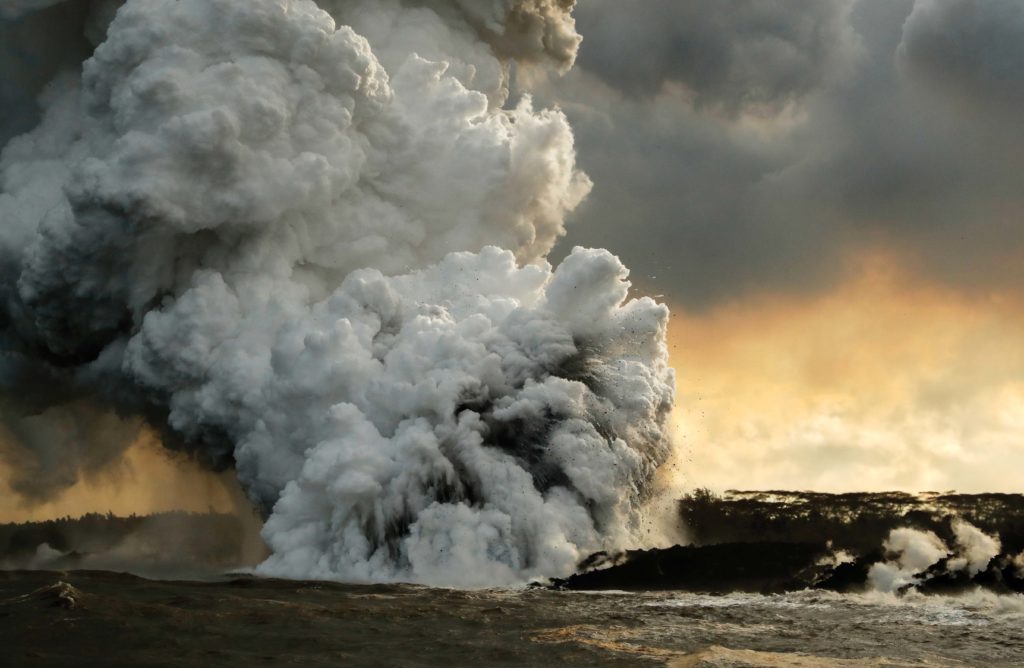
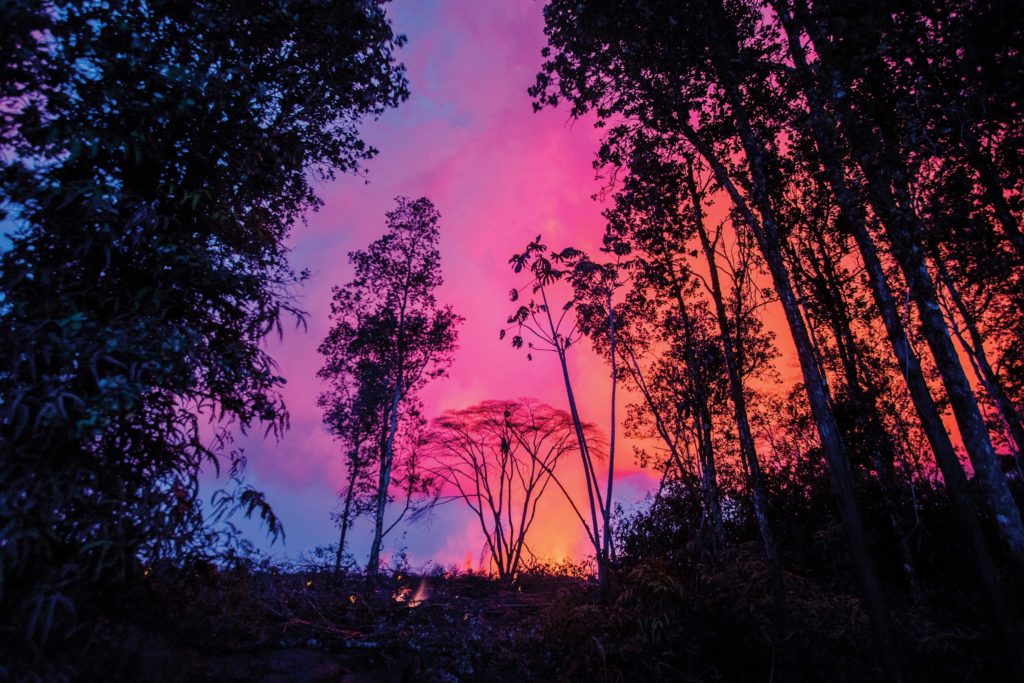
Traditional Polynesian thought suggests that the universe is one in which all things, including the gods, are part of nature. Creating and sustaining a productive society meant living harmoniously with this natural world. Correspondingly, failing to do so meant retribution from the gods.
The goddess Pele is featured throughout the traditional Polynesian narrative with most tales involving seduction, jealousy and revenge. But these tales also, more significantly, bridge the natural with the supernatural in a way that explains the science of the islands. Important to understand, however, is that the people of Hawaiʻi did not consider the concept of the supernatural in the sense of contemporary usage.
The goddess Pele is featured throughout the traditional Polynesian narrative with most tales involving seduction, jealousy and revenge.
True stories exist about her destruction and creation of land, about her devastation of entire villages. The most recent activity—the opening up of new fissures in Lower Puna — has indeed overrun several subdivisions with lava. The flow to the sea has even changed the coastline, inundating Kapoho and its famous tidepools.
But other stories exist as recounted by real people who swear to have seen Pele in one of her many forms—in either flesh or spirit. She sometimes immerges with a white dog on moonless nights to alert human beings when an eruption is imminent. Other times, she appears to unsuspecting souls as a lady in a crimson dress or an old woman in flowing white.
On the island of Oʻahu, on the Old Pali Road of Nuʻuanu Valley, stories are told of a woman with long, black hair by the side of the road. Drivers who offer her a ride are blessed with good fortune; those who do not are said to find a different sort of response.
Another belief is that one must not take pork over any pali (hill or cliff) separating two sections of an island. Legends tell us that the Pele and the demigod Kamapua‘a, the hog-man, had a turbulent relationship and agreed not to see each other. If one takes pork over the pali, one is symbolically taking a piece of Kamapua‘a toward Pele. Pele would cause a car’s engine to fail to keep that from happening.
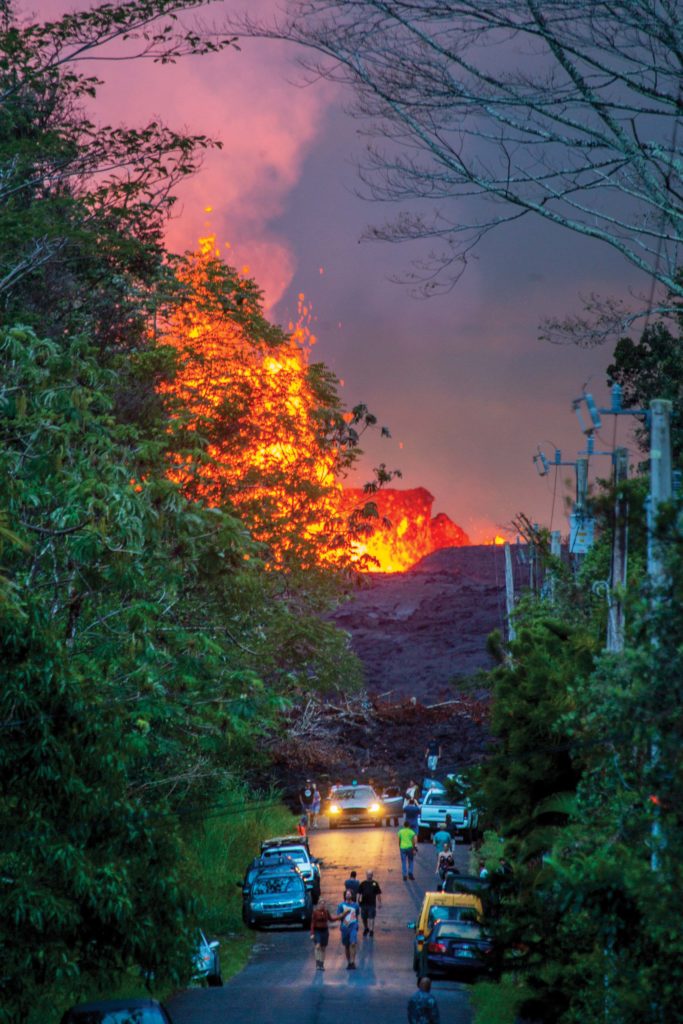
20180525-8232 CTY LEILANI ESTATES LAVA PHOTO BY DENNIS ODA Residents view the lava from fissure 7 from Makamae St. in Leilani Estates. Less than 10 minutes later, an alarm was sounded (my phone was blaring the alarm even) as everyone (including in the photo) was evacuated by the National Guard and police. PHOTO BY DENNIS ODA. MAY 25, 2018. 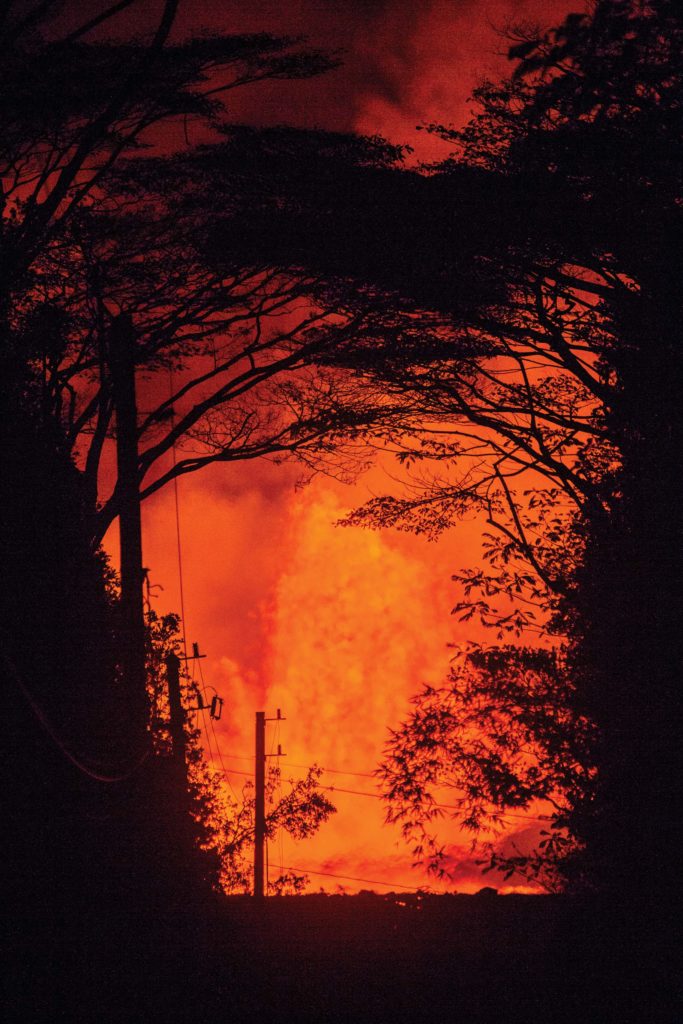
20180530-1357 CTY LEILANI ESTATES LAVA PHOTO BY DENNIS ODA This is the night time view of lava eruption from fissure 8 from Luana St. in Leilani Estates. PHOTO BY DENNIS ODA. MAY 30, 2018.
Accounts also exist that involve Pele’s creations. It is kapu (taboo) to take rocks from her lava fields. Every year, dozens of packages are sent to post offices within the islands after misfortune befell individuals who had taken rocks or black sand with them after vacationing in Hawaiʻi.
According to Hawaiian historian Jon Osorio there is a very real link between people’s ill-fated experiences and the goddess Pele. “For Hawaiians, there is a long tradition that you don’t take things that don’t belong to you.”
For Hawaiians, there is a long tradition that you don’t take things that don’t belong to you
Jon Osorio, Hawaiian historian
This respect broadens to sense of understanding and resignation for the power of Pele. In the book Pele: Goddess of Hawaiʻiʻs Volcanoes, by artist and author Herb Kawainui Kane, one resident of the village of Kalapana (interviewed while loading his possessions into a truck in 1986) expressed, “I love my home … live here all my life and my family for generations. But if Tutu like take it, it’s her land.” The term tutu, an affectionate term for grandparent, is used to describe “Tutu Pele” not in a manner of fear but as term of filial reverence and acceptance.
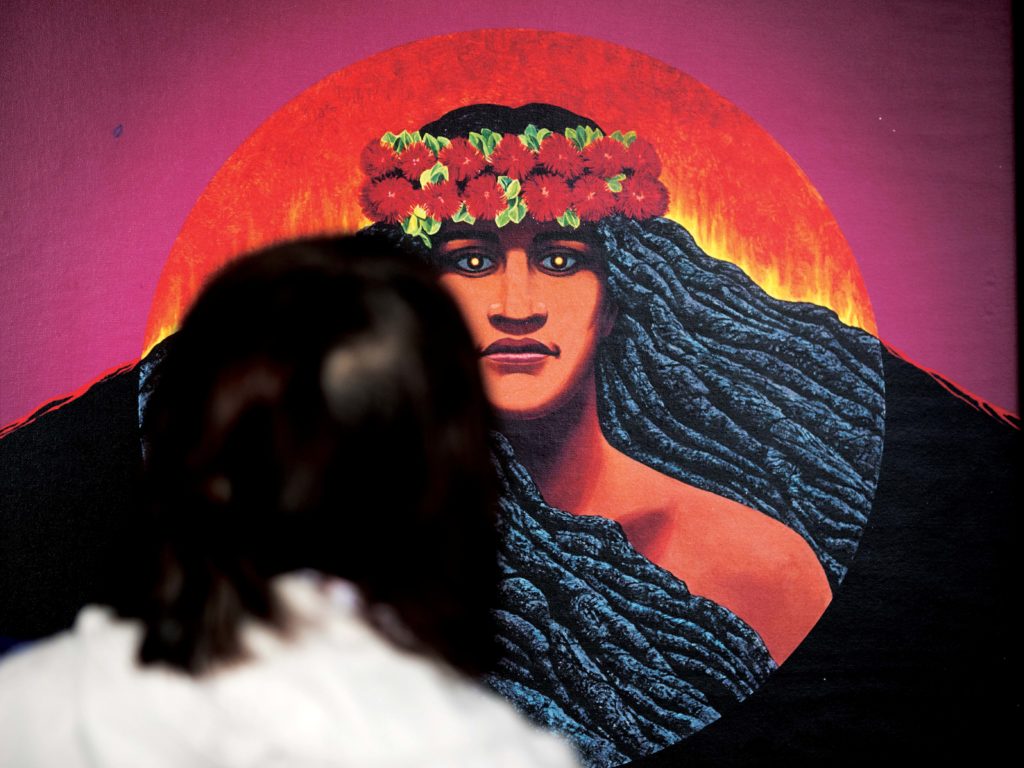
Throughout the centuries, Hawaiians have offered gifts of lei to Pele. Even ʻohelo berries that grow high in the lava fields and cinder plains are picked and shared with her in her honor. Pele is also celebrated through hula performed at Kilauea and throughout the islands because Hi‘iaka is said to have originally privately performed the dance at her request.
Pele still resides in Halema‘uma‘u crater at the summitbut recent volcanic activity would suggest the goddess is in full creation mode. At presstime, the situation was fluid (no pun intended) and the lava continued to flow, entering the ocean at Kapoho, forever altering the island’s coastline. Fountains of lava could be seen from as far away as Hilo (but posed no threat to the area). Pele’s hair (lightweight volcanic glass) was reported falling near Leilani Estates, one of the first subdivisions evacuated in early May 2018. In addition, off the southeast coast of the island of Hawai‘i, beneath the surface of the Pacific Ocean, and pushing up through hydrothermal vents is the newest of Pele’s creations—the island of Lo‘ihi.


